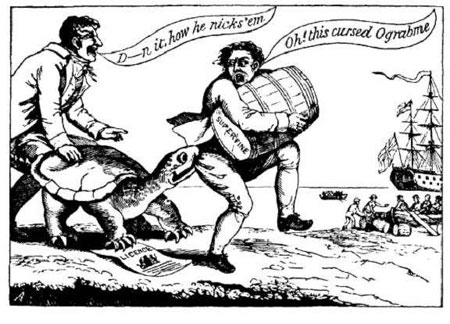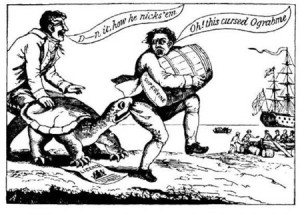To “Do Now” or Not

That is the question
In 1961, when I entered junior high school in the New York City Public Schools, I was introduced to the “Do Now” activity–an individual, pencil-and-paper exercise (the sort of thing that might otherwise be done at home) at the beginning of each math class–which continued as long as I took mathematics courses. The intent was to ensure that students understood the previous lesson, correct any student misunderstandings, and remedy any deficiencies. It would also help students who had been absent and (hopefully) serve as a motivation for the class.
Today, the “Do Now” has become almost universal across the secondary school curriculum. Walk into a United States history class and you are likely to witness the class period beginning with the teacher calling students’ attention to the daily “Do Now” inscribed on the blackboard. Usually, this entails a brief reading assignment followed by several questions introducing the day’s lesson. Many teachers believe this opening activity starts the lesson off in an orderly, efficient, and productive manner, improving classroom management in the process.
Unfortunately, the “Do Now” has been corrupted: it has been drastically altered from an effective review technique for the drill required in mathematics instruction to an introductory device that is usually, at best, an ineffective waste of instructional time. Well-meaning educators are often unwittingly sabotaging their lessons before they have a chance to get them off of the ground. Even teacher educators, supervisors, teachers’ unions, and professional organizations often embrace the “Do Now” as the gold standard for inclusion in a lesson plan.
A typical “Do Now” assigned to a heterogeneously grouped United States history class might be the following:
Answer the following questions based on the political cartoon that appears below and your knowledge of United States history.
1. Describe in detail what you see in the political cartoon.
2. Why is the turtle in the cartoon named “Ograbme?”
3. How does the political cartoon reflect the way the cartoonist feels about Thomas Jefferson’s trade policy?
The questions incorporated in this activity elicit conclusions about the cartoonist’s message. Note that the first question merely asks students to pull information from the cartoon, while the second and third questions require higher levels of thought. These three questions could ultimately lead to further questions such as:
“How does the cartoonist feel that the Jefferson embargo is affecting New England and the United States?”
“What specific evidence in the cartoon leads you to an understanding of the opinion of the cartoonist?”
“Why do you think the Jefferson embargo became so controversial?”
“What constitutional alternatives might you use if you were a dissatisfied citizen wishing to oppose the Jefferson embargo?”
The richness of the lesson points to the problem that the history educator faces when employing a non-mathematical “Do Now” commencement activity. Because the elements of good questioning are already evident in the above referenced “Do Now,” one might wonder why these questions necessitate an opening activity at all. Most teachers assign homework in advance of the lesson. Some of these questions (question number one in particular) would be better addressed in a homework assignment, thus saving classroom time for more productive and more interactive discussion.
There are also psychological problems created with the incorporation of “Do Now” exercises. The completion of the above assignment, particularly in a heterogeneous situation, may extend far beyond the five minutes of a mathematics drill activity and could vary from five minutes for stronger students to fifteen minutes for the weakest. Weaker students may have difficulty identifying finer details in the cartoon and may become frustrated with the remaining two questions. The unintended message if the teacher then “cuts” the activity off before students have completed the task may well be that the work is really not that important (particularly if it is not being collected and graded). This, in turn, might encourage students to begin arriving late for class (when, in their view, the “real work” begins). Or it might compel them to “stretch” the activity to as great a length of time as possible or to simply (either covertly or blatantly) avoid the “Do Now” exercise entirely.
A stronger instructional opening would focus student attention upon the instructor rather than desk activity. Effective commencement activities might include a discussion of an upcoming homework assignment, a reminder about a future examination, the progress of an assigned project, or perhaps the discussion of a significant news development related to the course of study. The message given to all students is that the teacher has started the serious instruction from the opening bell (i.e., he or she is speaking) and the class must be engaged. The advantage that this practice also creates is that through a discussion clarifying class work or dealing with a contemporary situation, a dialogue is easily created where students are encouraged to participate. The discussion that begins with this opening segment will often carry over to the remainder of the period, as students have now already been engaged in conversing with the teacher (and each other) prior to the start of the formal lesson.
Students in today’s technological age require stimulation. It is, therefore, essential to follow this initial discussion with some motivation prior to the beginning of the informational portion of the lesson. A “Do Now” activity subtracts from the time needed to properly stimulate a class and adds the drawback of “dulling” the instruction by encompassing a drill that, by its very nature, is perceived as “drudge work,” done in isolation at the student’s desk.
The natural discussion that would be generated from the snapping turtle depicted in the cartoon would be sufficient to stimulate most classes through immediate discussion. With proper instructional guidance and effective questioning techniques, it offers the opportunity to get students to speak to each other. (How often do we complain that our students don’t want to participate?) The “Do Now” described earlier usually leads to a very dull reading of individual answers rather than engaging dialogue.
This is not to say, however, that there should be a complete removal of any hands-on activity during the lesson. If any new material, such as a primary document, were to be introduced as a portion of the lesson, it certainly would be desirable to give students time to read, examine, and digest the information, especially with one or two thought-provoking questions to consider. If such questions could be developed within the framework of the lesson, the teacher would be more likely to succeed. With the students now more engaged by the subject matter, they will also be more inclined to take seriously a short task over very limited time (which the teacher will now have more power to control).
The elimination of a formal, daily “Do Now” activity, in sum, opens the lesson to far greater potential for effective motivation and classroom management. It will additionally allow for a more effective placement of hands-on instruction at an appropriate point in the lesson time frame.
It is ultimately the teacher who must break out of the box and incorporate a varied yet structured approach to accomplish effective teaching in United States history. By liberating students from the tyranny of the “Do Now,” the history educator will thereby be free to create well-structured, rich lessons containing depth and meaning.
This article originally appeared in issue 7.1 (October, 2006).
Stephen A. Shultz is the coordinator of social studies with the Rocky Point Public Schools in New York. He has authored teacher manuals in both United States and global history and has contributed to several textbooks and sourcebooks.
